This Massive, Unique 50 Is Imperfectly Beautiful: Zenit 50mm F0.95 Review
For more stories like this, please subscribe to The Phoblographer.
Modern lenses are becoming increasingly sharp, with an impressive ability to suppress flare and aberrations. The sharpness is impressive, but photographers have taken to foggy filters, prisms, and Photoshop to add character that this sharpness has dampened. Enter the new Zenit 50mm f0.95: a Sony E mount lens made from a Russian company that’s been around since the 1940s. The Zenit 50mm f0.95 is a freshly-released lens that looks like it time-traveled to get here. It sports an all-metal look that’s difficult to find outside of Leica or adapted film lenses. And the images? The lens flare will make those Photoshop brushes jealous.
But, the Zenit 50mm f0.95 is an all-manual lens. That, of course, begs the question, is the bokeh at f0.95 worth sacrificing autofocus and everything else that comes with an electronic connection to the camera? I tested the 50mm on some wildflower portraits to see where the mix of modern and vintage fits in with the Sony ecosystem.
Too Long, Didn’t Read
The Zenit 50mm f0.95 is fully manual lens and bursting with the character that modern lenses are trying to suppress. But, that also means it misses out on factors like suppressing chromatic aberration and coma.

Zenit 50mm f0.95 Pros and Cons
Pros
Cons
- Wide purple banding in high contrast, out-of-focus areas
- Soft, smudged edges
- Manual everything
- Heavy
- The lack of a clicked aperture ring may bother some folks.
Gear Used
I used the Zenit 50mm f0.95 with the Sony a7 III. I carried the kit in the Lowepro PhotoSport AW II 24L.
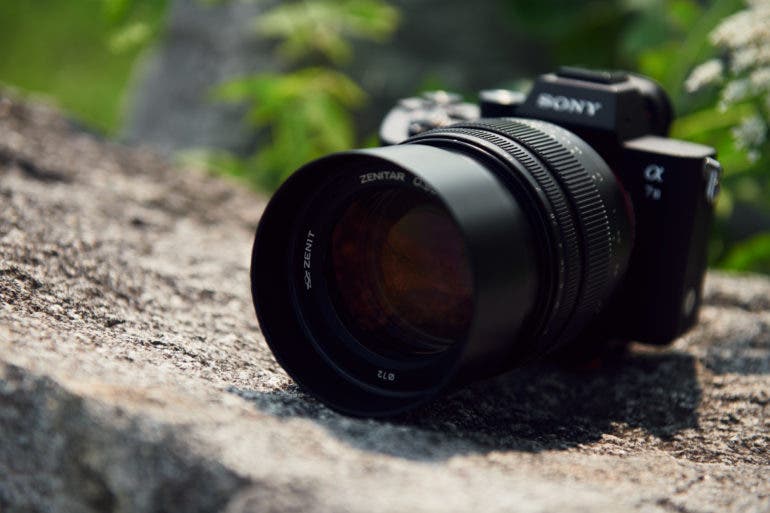
Innovations
Innovations? Psh. This lens is innovative because it does the opposite of what most modern lenses are doing. The Zenit 50mm f0.95 is about character and film-inspired styling. It embraces flare and neglects corner sharpness in the name of dreamy bokeh. That said, the 50mm f0.95 is rare in an E-Mount, and the 14-blade aperture is unusual. What’s innovative here is that you can put an 0.95 aperture 50mm and oodles of character on a Sony body. (China-based Zhong Yi optics also has a 50mm f0.95.) The Zenit is much cheaper than Nikon’s NOCT lens, with a more classic look.
Zenit 50mm f0.95 Tech Specs
Zenit lists these features for the 50mm f0.95 lens:
- Dimensions: 85.5mm diameter, 117.5mm tall
- Weight, grams: 1200
- Bayonet: Sony E
- Focal length, mm: 50
- Aperture ratio (max.), mm: 0.95
- Aperture ratio (min.), mm: 16
- Aperture blades: 14
- Frame size, mm: 36х24
- Field angle, °: 44
- Camera lens type: Standard
- Lens design: 8 groups / 9 elements
- Minimum focusing distance, m: 0.7
- Lens filter diameter, mm: 72
- Focusing: Manual
Ergonomics

The Zenit 50mm f0.95 is an all-metal build with a classic feel. Pulling the lens out of the box, I was immediately reminded of Leica M series lenses. The lens is legitimate photographer eye candy. Of course, metal is heavier than plastic, atnd he 50mm, which is roughly 4.6 inches long, weighs a hefty 2.6 pounds. That made the Sony a7 III front-heavy and the grip on the body a bit less comfortable. It was managable for shooting for an hour or two, however.
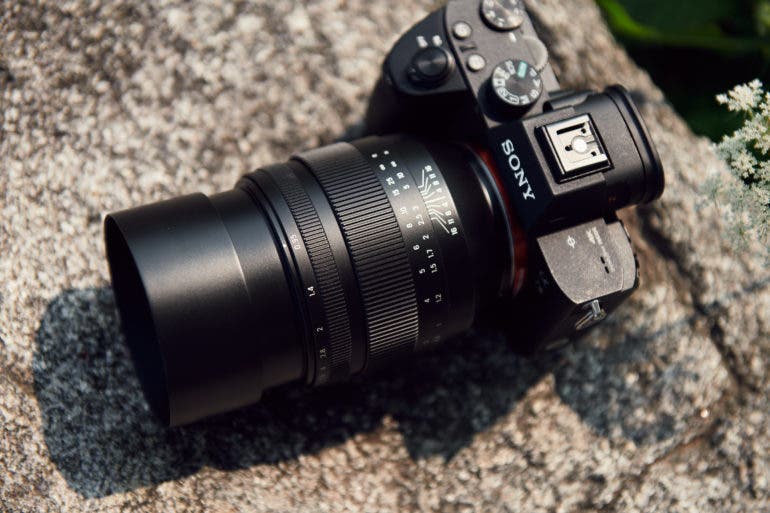
At the front of the lens, the prime has an all-metal hood that slides out when needed and blends seamlessly with the rest of the body when it’s not. The rounded aperture, made of 14 blades, is evident just by looking at the front of the lens when stopped down a bit. The 50mm accepts 72mm filters with a relatively flat front glass element.

Moving from the front of the lens towards the mount, the outermost ring is the aperture. The aperture ring turns smoothly: there’s no click to let you know you’ve hit the next aperture setting. But, that allows the lens to shoot at apertures between the ones marked on the lens barrel.

The ring closest to the lens mount controls the focus. A depth of field scale is built into the ring, indicating how much will be in focus when at various apertures. The focus ring also turns smoothly. Both rings feel great in the hand. The aperture is ring is more narrow than the focus ring, which helps differentiate the two without removing my eye from the viewfinder.
Build Quality
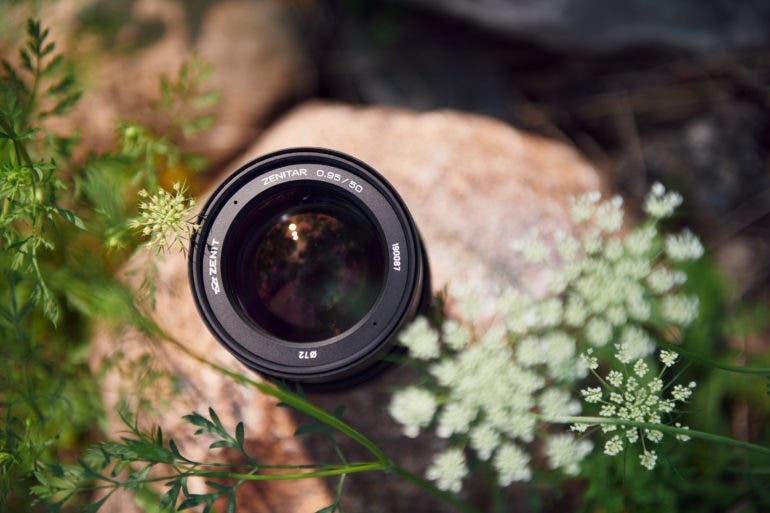
Confusing the Zenit 50mm f0.95 with a cheap budget lens is impossible. The all-metal build gives the lens a luxurious feel, and the construction both looks and feels beautiful. Using a heavy, all-manual lens becomes more enjoyable when you actually want to keep your hands on it all the time.
What the lens lacks, however, is weather-sealing. That’s not uncommon for vintage-inspired metal lenses like this. While outside using it, I got back to my vehicle just as it started to rain, and the brief encounter with the elements didn’t seem to phase the lens. While I would have loved to keep shooting with it in the rain, it’s not going to be ruined in the few moments between the rain hitting it and tucking it in a camera bag.
Focus

As an all-manual lens, the Zenit 50mm f0.95 encourages photographers to slow down and perfect the shot. I shot the lens both with Sony’s focus peaking and without. I was surprised at how clearly I could see what was in focus without the aid of focus peaking, but naturally my hit rate improved dramatically with focus peaking. Sony’s focus peaking isn’t 100 percent accurate, however. To shoot wide open, I found using focus peaking and zoom together to be the safest method of netting a sharp shot.
The prime can focus as closes as about 2.2 feet: enough wiggle room to get some great head-and-shoulder portraits. When working with the lens at close distances, I found it simplest to set the focus at the closest point, then move the camera itself until that focus peaking hit the right spot.
Ease of Use

The Zenit 50mm f0.95 lacks all electronics, including the connection to the camera itself. That means, besides the manual focus, it’s best used in full manual mode for maximum control. You’ll also lose the lens-associated metadata. For consistent colors, you’ll want to get off of auto white balance as well. At more narrower apertures, I found that the colors varied quite a bit from the same shot if left on auto white balance.
That, of course, means the Zenit 50mm f0.95 is no rookie lens. It takes patience, practice, and the use of both focus peaking and zooming in on the electronic viewfinder. But, for seasoned photographers, that patience pays off with image quality that you’d be hard-pressed to replicate elsewhere.
Image Quality

The Zenit 50mm f0.95 makes bokeh look like child’s play. Literally, even playground dirt turns into soft, swirling bokeh. And don’t get me started on the arc lens flare that makes imitation Photoshop brushes drip with envy. This 50mm is big on incredible character, but short on a few pixel peeping standards.
Bokeh

At f0.95, bokeh is so plentiful the background looks like an enlarged pointillism painting. Shooting the Zenit 50mm f0.95 wide open, you get hazy colors and an incredibly soft background and foreground. The edges are smudged and there’s a slight vignette: a combination that helps make that bokeh appear to swirl. Stepping down just slightly even to f1.4, you still get great bokeh but lose much of that dreamy haze.

Bokeh balls are circular and sometimes soft, sometimes soapy. In the soft shade, those bokeh balls had a nice smooth edge. In harsher light, like sunlight, those bokeh balls turn into soap bubbles, with a slight texture and a harder edge.
Sharpness

The trick with this lens is to make sure the subject also isn’t rendered to dreamy bokeh. Shooting wide open, the subject has a light, dreamlike look. There’s a bit of haze and it’s not 100 percent sharp. Stepping down, contrast comes back in at f1.4, and solid center sharpness is easier to get at f2.
The corners, however, stay soft. Lines towards the corners look like smudged ink, rubbed out towards the edges. That chromatic aberration doesn’t really dissipate until f11. That is some of what gives the background its swirly qualities, but you’ll want to place the subject away from the edges.
Lens Character
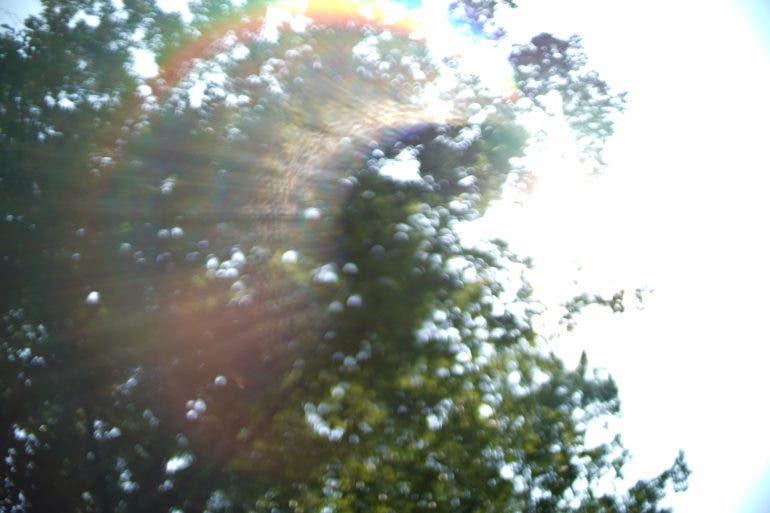
If you want to see character, just point the Zenit 50mm f0.95 at the sun. In harsh light, the lens will create an epic arc flare. Adjusting the angle of the lens just slightly, I could go from a partial arc flare that looks like lots of tiny light rays to a more narrow curve with a solid rainbow. After I saw what the lens was capable of with stronger light, I was even more disappointed that haze obliterated my golden hour portraits. You’ll have to settle for unexciting sample photos of a blurry tree and a high sun. (How are folks in Oregon? Haze is a trivial complaint compared to what it must be like in Oregon right now.)

The flare mixes with the swirly bokeh to create plenty of character. But, there are a few imperfections that may bother some photographers. The same conditions that create that epic flare also create some obvious chromatic aberration or purple fringing. I didn’t spot aberration outside of the highest contrast, out of focus areas, but the purple banding is quite thick. There’s also an obvious vignette that, at wide apertures, looks like a solid black line cutting off the corners. You won’t be able to recover those corners and will need to crop if you want to eliminate the black corners at more narrow apertures.
Color Rendering

Wide-open, the lens creates light, hazy colors. Step down a little to f1.4 or f2 and you lose the haze and get some pretty decent color accuracy. I ended up editing fewer images than I usually do because I love the colors straight out of the camera. They are a bit warm, with just the right amount of color without going overboard. It’s worth noting, of course, that the lens does best by manually selecting a white balance. Colors tended to change at more narrow apertures when I forgot to switch to a manual setting. Before switching the white balance, I would get accurate, bright colors at f2 and muted, more faded bluish greens at the more narrow apertures.

Extra Image Samples
From day one, The Phoblographer has been huge on transparency. Nothing from this review is sponsored. Further, lots of folks post reviews and show lots of editing in the photos. The problem then becomes that anyone and everyone can do the same thing. It’s not showing what the lens can do. So we have a section in our Extra Image Samples area to show edited and unedited photos. From this, you can make a decision for yourself.
Edited
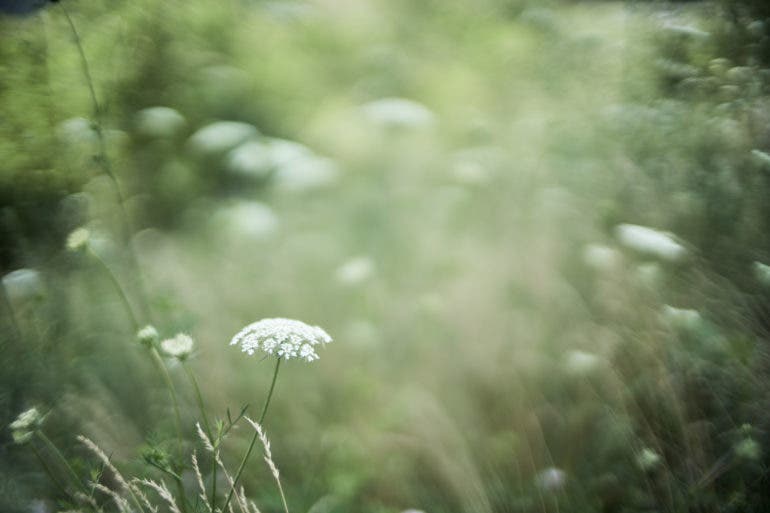









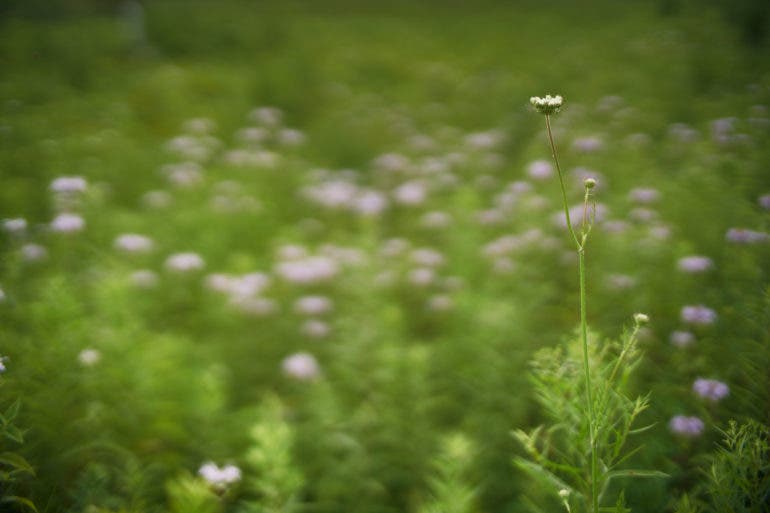


Unedited

















Conclusions
Likes
- This lens has plenty of character, starting with gorgeous arc flare.
- I love that this lens offers some incredible, dreamlike, hazy bokeh, or you can step down just a bit to eliminate the haze but still get creamy backgrounds.
- The all-metal build on this lens both looks and feels great.
- The lens hood is built right in and blends seamlessly with the metal body.
- While the price is nothing to blink at, it’s quite a bit less than Nikon’s Noct lens and Leica lenses which offer a similar build.
Dislikes
- The flare is sometimes ruined by a very noticeable purple fringing on high contrast, out of focus areas.
- The edges are quite soft, even when stepping down.
- The all-metal build makes this lens very heavy.
- It’s a manual focus lens, and Sony’s focus peaking isn’t the easiest to work with.
The Zenit 50mm f0.95 is nearly perfectly imperfect. The so-called imperfections are what add character to a shot, like arc flare and swirly, bubbly bokeh. The exception? I really didn’t care for the wide purple banding the lens sometimes generates in high contrast, out-of-focus areas. The vignette that is character-building at the widest apertures is so dark it’s unrecoverable at more narrow apertures. But, who buys an f0.95 to shoot at f11?
Shooting with an all-manual lens is a challenge that’s not for beginners, particularly with Sony lacking a focus peaking system at f0.95. Sony shooters will want to use a mix of focus peaking with magnification on the EVF to shoot this lens wide open. If that sounds like too much trouble, then this isn’t the lens for you.
For photographers with the patience for all-manual lenses, and genres that are conducive to such a slowdown, the Zenit 50mm f0.95 is dripping with classic character. It’s not for pixel peepers, but, frankly, what classically inspired, all-manual lens is? This is a lens that requires adding zero extra character in Photoshop. Just focus carefully and make magic.

I’m giving the Zenit 50mm f0.95 four out of five stars. Want one? Check out Amazon.